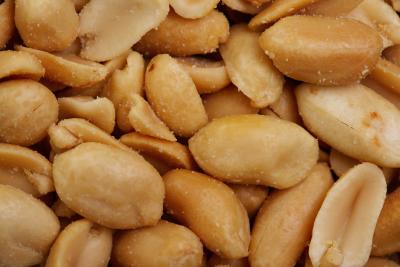More children suffer from food allergies than you may think. According to the Cleveland Clinic, 8 percent of children in America have food allergies — that’s around 2 million kids. Food allergies are caused by a hitch in your child’s immune system that misidentifies certain food proteins as dangerous intruders. Some foods are more likely to cause allergies in children than others.
All About Allergies
Harmless food proteins can evoke a defensive response from the body’s immune system. According to the Cleveland Clinic, the first time your child eats a food to which he is allergic, his body makes immunoglobulin E, or IgE, antibodies. The next time your child eats the same food — even a small amount of it — these IgE antibodies release histamines, a chemical that targets the food protein and attempts to rid it from the body. Histamines affect the skin, gastrointestinal tract and respiratory and cardiovascular systems.
Signs and Symptoms
Signs and symptoms of food allergies usually occur soon after your child eats the food — after a few minutes or up to an hour later. Food allergies typically present on the skin as hives, itching or eczema. Your child may wheeze, have trouble breathing or get a stuffy nose. Gastrointestinal signs and symptoms can include nausea, vomiting, diarrhea and tummy pain. Your child’s lips, face, tongue and throat may also swell. A severe allergic response, anaphylaxis, can be life-threatening.
Common Food Allergies
Children tend to be allergic to very specific foods. According to the Cleveland Clinic, only six foods account for 90 percent of food allergies in children: milk, eggs, wheat, soy, peanuts and other types of nuts. Most allergies in adults are caused by fish, shellfish, peanuts and other nuts. Chocolate is often identified as yet another culprit; however, MayoClinic.com indicates that rarely does chocolate cause food allergies.
Treatment for Food Allergies
The best way to treat your child’s food allergy is to make sure she doesn’t eat it. This can be difficult, as eggs, peanuts, nuts and milk are hidden ingredients in many prepared foods, necessitating careful label-reading when you purchase groceries. Allergic reactions can range from mild to severe; if your child has severe food allergies, her pediatrician may recommend that you and the child carry an emergency dose of epinephrinen the form of an epi-pen with you at all times.
Other Information
Sometimes food allergies are mistaken for food intolerance; for example, some symptoms of lactose intolerance — cramping and diarrhea — can mimic a milk allergy; however, your child simply lacks the enzyme, lactase, that is needed to digest milk sugars. Most children outgrow food allergies to eggs, milk, wheat and soy by age 5, according to KidsHealth, a service of the Nemours Foundation. However, only about 20 percent of children outgrow peanut allergies; only 10 percent outgrow an allergy to other nuts.






